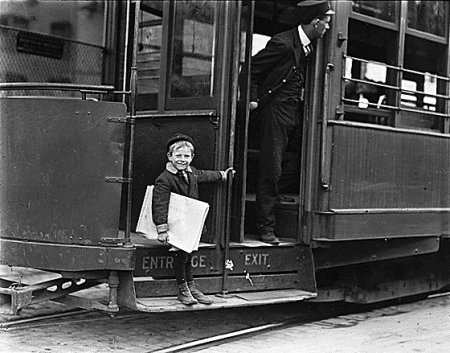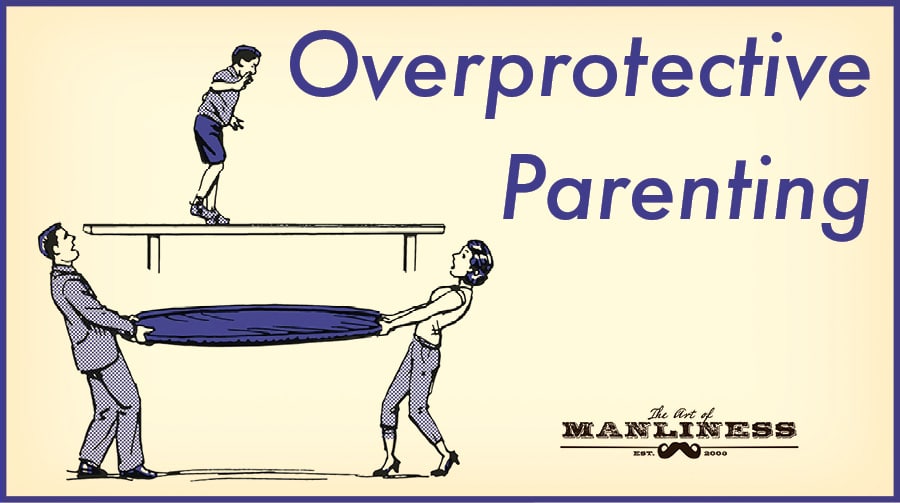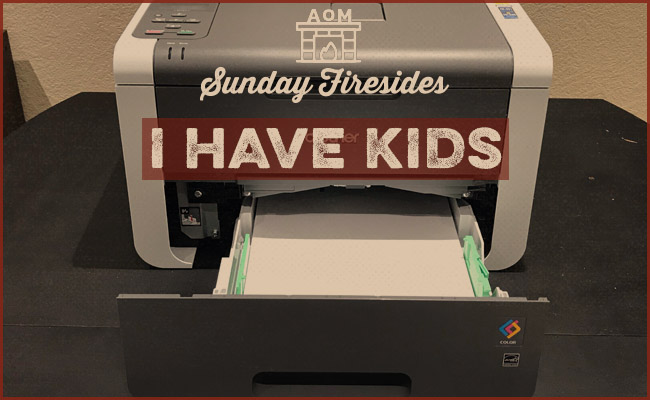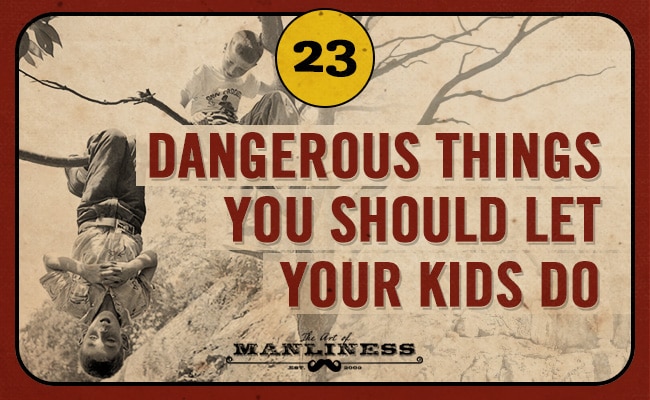
With our archives now 3,500+ articles deep, we’ve decided to republish a classic piece each Friday to help our newer readers discover some of the best, evergreen gems from the past. This article was originally published in June 2017.
Even though the modern world isn’t any more dangerous than it was thirty or forty years ago, it feels like a more perilous place. Or, more accurately, we inhabit the world today in a way that’s much more risk averse; for a variety of very interesting and nuanced reasons, our tolerance for risk, especially concerning our children’s safety, has steadily declined.
So we remove jungle gyms from playgrounds, ban football at recess, prohibit knives (even the butter variety) at school, and would rather have our kids playing with an iPad than rummaging through the garage or roaming around the neighborhood.
Unfortunately, as we discussed in depth earlier this year, when you control for one set of risks, another simply arises in its place. In this case, in trying to prevent some bruises and broken bones, we also inhibit our children’s development of autonomy, competence, confidence, and resilience. In pulling them back from firsthand experiences, from handling tangible materials and demonstrating concrete efficacy, we ensconce them in a life of abstraction rather than action. By insisting on doing everything ourselves, because we can do things better and more safely, we deprive kids of the chance to make and test observations, to experiment and tinker, to fail and bounce back. In treating everything like a major risk, we prevent kids from learning how to judge the truly dangerous, from the simply unfamiliar.
Fortunately, we can restore the positive traits that have been smothered by overprotective parenting, by restoring some of the “dangerous” activities that have lately gone missing from childhood. The suggestions below on this score were taken both from 50 Dangerous Things (You Should Let Your Children Do), as well as memories from my own more “free range” childhood. If you grew up a few decades back, these activities may seem “obvious” to you, but they’re less a part of kids’ lives today, and hopefully these reminders can help spark their revival.
While each contains a element of danger and chance of injury, these risks can be thoroughly mitigated and managed by you, the parent: Permit or disallow activities based on your child’s individual age, maturity level, and abilities. Take necessary precautions (which are common sense and which I’m not going to entirely spell out for you; you’re a grown-up, not a moron). Teach and demonstrate correct principles, and supervise some practice runs. Once you’ve created this scaffolding of safety, however, try to step back and give your child some independence. Step in only when a real danger exists, or when your adult strength/dexterity/know-how is absolutely necessary. And don’t be afraid to let your kids fail. That’s how they learn and become more resilient.
In return for letting your children grapple with a little bit of healthy risk, the activities below teach motor skills, develop confidence, and get kids acquainted with the use of tools and some of the basic principles of science. Outside any educational justification, however, they’re just plain fun — something we’ve forgotten can be a worthy childhood pursuit in and of itself!
Play With Fireworks
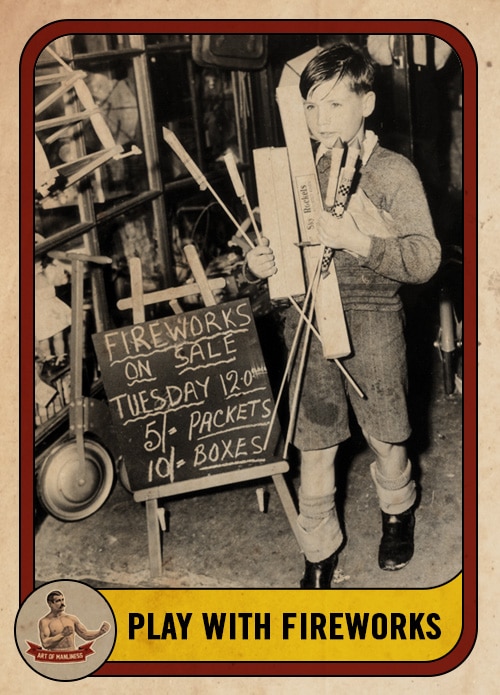
Playing with fireworks is not only a fun way to celebrate freedom, it teaches your kids how to responsibly handle fire and to have a healthy respect for exploding objects. Unfortunately, thanks to stringent fireworks laws and parents freaked out from viral stories of children losing eyeballs while lighting Roman candles, many kids today have never experienced the pure excitement and joy of igniting a fuse and waiting for the impending explosion.
Introduce your 3-5 year olds to the world of fireworks with “pop-pops” — those little paper-wrapped tadpole-like things you throw on the ground. They’re safe and the kids can have fun with them without injuring themselves or anybody else. You can also get them acquainted with sparklers. These preparatory “fireworks” offer a chance for children to learn general principles of safety: not to throw lit objects at others, touch people with a hot sparkler, handle a dud, etc.
When your kids hit age 6, you can start letting them light innocuous fireworks like snakes and smoke bombs. These don’t explode and will teach your kids how to light a fuse safely and to be aware of others as they use firecrackers.
By age 9 or 10, your kid should be ready to fire off pretty much anything you can find at a fireworks stand. You should continue to supervise their pyrotechnics until they’re teens, though.
Hammer a Nail
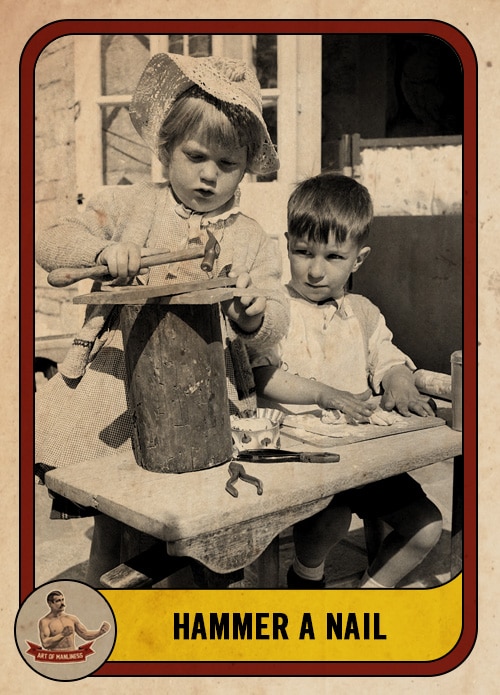
Hammering a nail is a basic life skill every person should master, but many parents don’t let their kids attempt this task out of fear of them smashing their fingers. Yes, little children are uncoordinated, but the only way they’ll ever become coordinated is if they gain hands-on experience in using tools. Start letting your 3-year-old practice hammering nails with a ball peen hammer. They’re lighter than the traditional claw variety and thus easier to handle. As your child’s dexterity and strength improve, upgrade him to a full-sized claw hammer, lay out a 2×4 and a box of nails, and let him go to town.
Talk about cheap entertainment.
Stick Your Arm Out a Car Window

Sticking their arm out the window of a moving car and letting their hand ride the wind is a great way for kids to get acquainted with the basic principles of aerodynamics — it’s like a personal wind tunnel. Encourage your child to play with different positions — moving the angle of her hand, closing and opening her fingers — to observe how these variations affect lift and drag.
Yes, an arm could be severed if it hit an object alongside the road, but objects are very, very rarely positioned close enough to cause a collision. And if they are, your kid’s got eyes, doesn’t she?
Jump Off a Cliff

When you jump from a cliff 20 feet high, you’ll hit the water at 25 miles an hour. That’s enough force to do some serious bodily damage. But making such jumps, and even those which are higher, is certainly doable, even for small kids, as long as you take precautions and teach them proper technique.
Make sure the water is deep enough; for a jump of 20 feet, the water should be at least 8 feet deep. Then add 2 feet of water depth for every additional 10 feet of jump height. Ensure the landing spot is free from underwater obstacles like rocks. And teach your child to jump in a pencil dive: body straight, arms overhead, back slightly arched to avoid rotating forward. For little ones who aren’t strong swimmers, put them in a life jacket before they Geronimo! into the water.
Use a Bow and Arrow
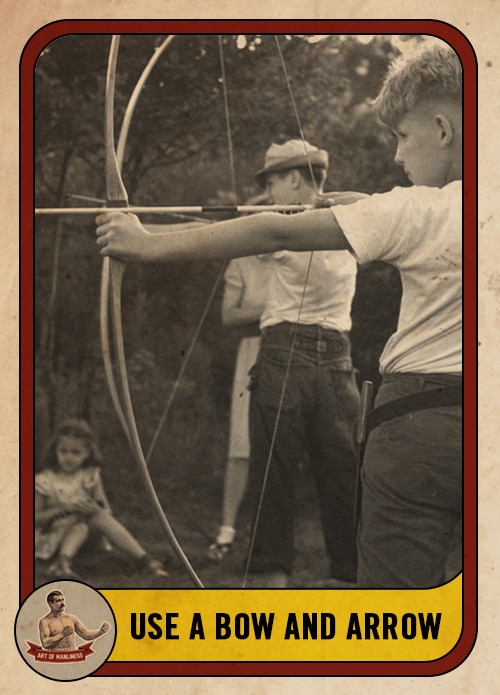
After watching a Robin Hood flick or reading The Hunger Games, your kids will probably want to shoot a bow and arrow. Instead of getting him (or her) the wimpy Nerf variety, let them use the real thing. A youth archery set can be found for less than $50, will provide hours of entertainment, and will teach your kids how to be responsible with potentially dangerous objects. They’ll also pick up skills like judging distance and how to aim.
Cook a Meal

Cooking might not seem that dangerous, but once your kids start wanting to help make dinner, you begin noticing how many tasks prompt a “Whoa, be careful there!” response. Sharp knives, stove fire, and hot pans present hazards. I remember when I was five, I decided to nuke a bowl of milk by myself; when I took the bowl out of the microwave, I spilled its scalding hot contents all over my arm. At first I hid from my mom, but as a huge blister formed, I had to confess and get it tended to by a doctor.
Despite such potential mishaps, it’s worth not only letting your children assist you in the kitchen, but allowing them to try cooking on their own too. More so than any other activity on this list, it’ll teach them a valuable skill towards grown-up self-sufficiency.
Climb a Tree
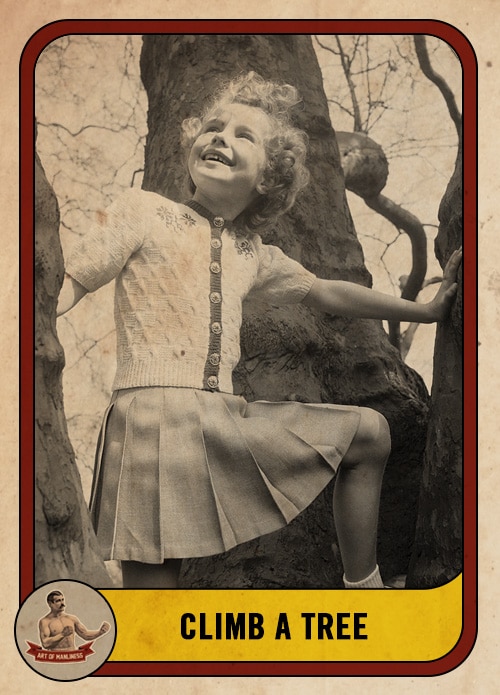
Few activities feel more liberating than climbing a tree. It’s thrilling to leave the ground and test your physical deftness, as well as your daring as you decide just how high up you’ll go. The air seems fresher among the branches. The most classic of classic childhood activities, hopefully tree climbing will continue on for another millennia.
Roughhouse
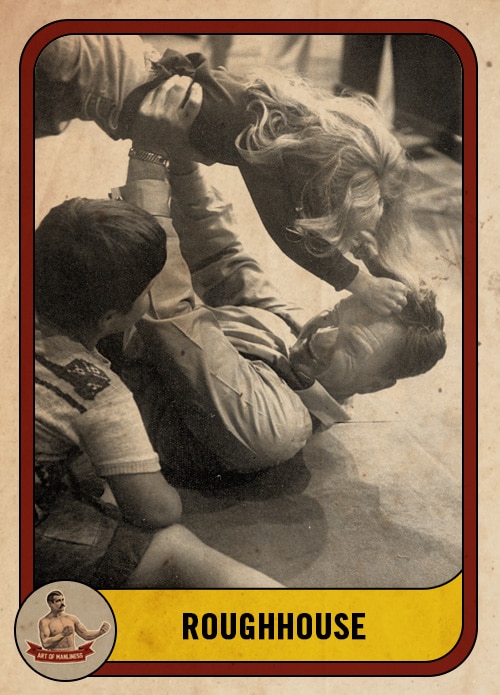
Roughhousing may just look like a primitive-level melee of potentially injury-causing wrestling and hair pulling, but it actually has a bunch of high-level benefits. Whether children are mixing it up with Dad, or with each other, research has shown that good old fashioned horseplay develops kids’ resilience, intelligence, and even empathy — it teaches them how to negotiate the dynamics of aggression, cooperation, and fair play. So suplex your children more often, and don’t break up the good natured battle royales they put on between themselves.
Go Sledding
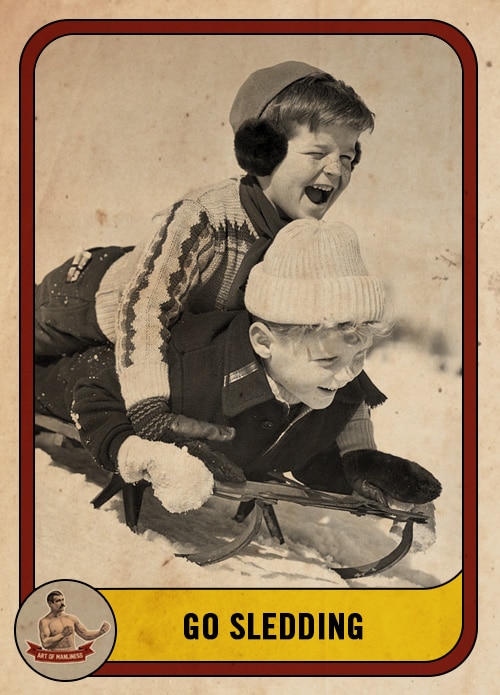
Yes, it’s hard to believe this needs to be mentioned — that sledding isn’t an intrinsic part of every childhood (at least for those who live in colder climes). But I’ve met an alarming number of kids who grew up where there was at least occasional snow, and yet never went sledding. It’s hard to know if this is because parents are worried about the danger of the activity, or are just too lazy to leave their toasty, climate-controlled home to take the kids to a local hill. Either way, while sledding invariably comes with some bumps and bruises, as well as environmental discomforts, there’s hardly a more fun and memorable childhood activity. Especially when mitten-molded snow ramps are involved.
Drive a Car

Not by themselves, mind you. Or on public streets, of course, which would be illegal. But in a big parking lot, largely free of obstacles, positioned on Dad’s lap, who can work the pedals and grab the steering wheel if needs be. From this position, a kid can experience the thrill of learning how to steer a 2-ton hunk of metal in relative safety.
Burn Things With a Magnifying Glass
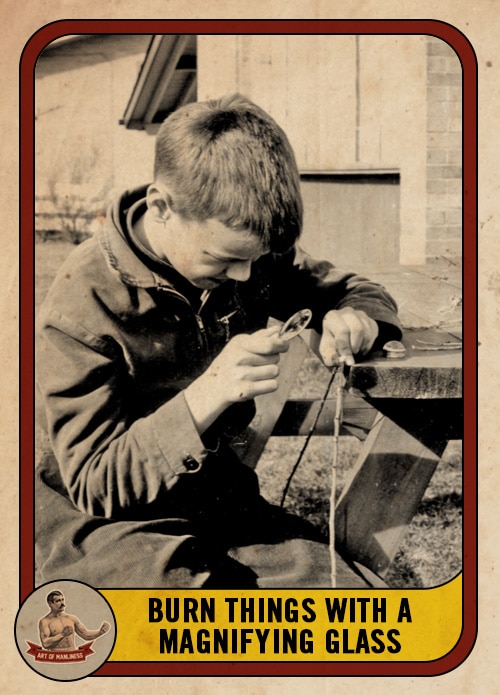
There are many fun and interesting ways to start a fire without matches, but using a magnifying glass is one of the most versatile. It provides you with a focused beam of heat that cannot only burn paper and leaves, but melt plastic. A kid can even use it to burn a symbol or his name into a piece of wood.
Walk or Ride a Bike to School
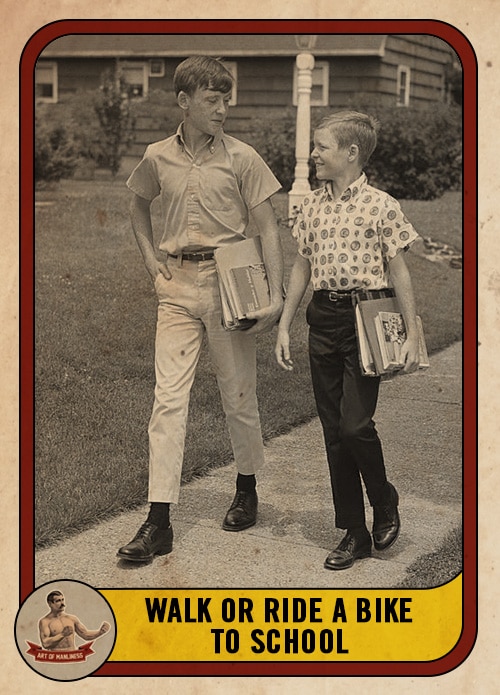
According to one study in the U.K., while 80% of third-graders were allowed to walk to school in 1971, that number had dropped to just 9% in 1990, and is even lower today. Parents started prohibiting their children from walking or riding their bike to and from school by themselves out of the fear that they might be kidnapped along the way. Yet abductions are exceedingly rare, and no more common now than they were several decades ago. Further, a child has a 40X greater risk of dying as a passenger in a car than being kidnapped or killed by a stranger.
If letting your kid walk to school (or even the bus stop) still fills you with dread, work up to it gradually: 1) Walk together with your child to school a few times, pointing out any dangers from traffic and reviewing how to deal with strangers, then 2) walk halfway to school with your child, watching her walk the rest of the way alone, and finally 3) let her walk all the way by herself, without you watching.
Shoot a Gun
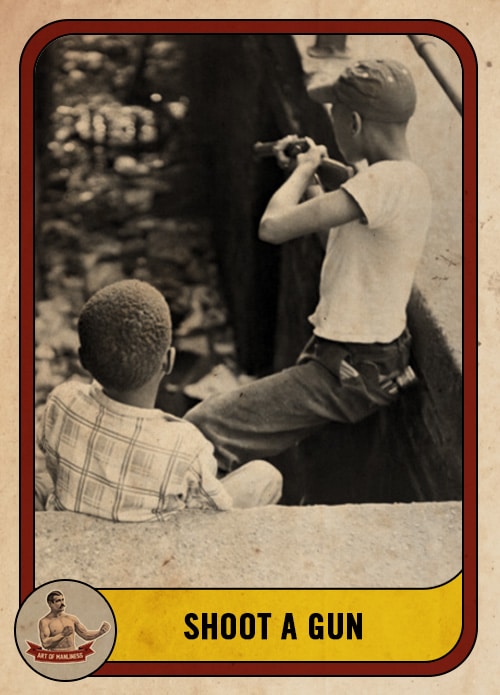
Guns and kids is an understandably sensitive topic, but we’d make the case that proactively teaching your kids how to safely use firearms is the best way to teach a healthy respect for them. When they’re 7 or so, introduce them to a pellet gun and begin teaching proper gun safety rules like keeping their finger off the trigger until they’re ready to shoot and treating every weapon as if it were loaded. Set up a target (tin cans are fun) in your backyard and let them plink away while you watch. As they get a little older, they can tote around their BB gun by themselves. Don’t worry about them shooting their eye out!
When they reach about age 10 or 11, you can introduce them to a .22 caliber rifle or pistol. Again, this should be done under your supervision and you should reinforce good gun safety principles the entire time.
Stand on the Roof

What kid hasn’t wanted to get a bird’s eye view of the neighborhood? Standing on the roof of your home is one of the more risky activities in this list, naturally, so supervise this vertical venture and take the necessary precautions: Only allow your child to attempt if your roof isn’t overly steep and is in good condition, without loose shingles and other potential hazards. Have your kid walk straight up and down the roof, standing with one foot on either side of its peak for stability, as they survey the landscape below.
Squash a Penny on a Railroad Track
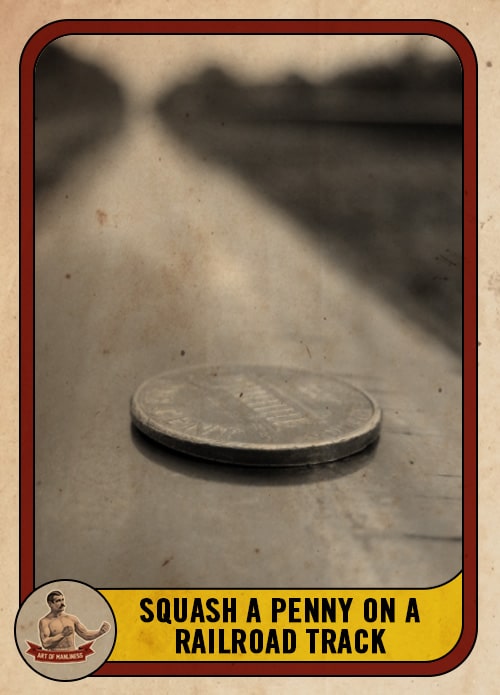
Kate did this once in Vermont as a kid. At the exact moment she placed the penny on the track, a car in an adjacent parking lot happened to honk its horn; thinking it was the sound of an oncoming train, she jumped 10 feet in the air. Her family still laughs about it.
You do want to stay aware as you put your penny on a railroad track to be sure a train isn’t coming. If you’re going to wait for the train to come by and smoosh your coin, you also want to stand back at least 30 feet, as it could hypothetically come flying off and hit you. You don’t have to wait around for the train, though. If you decide to come back in a few hours or the next day to see what became of your penny, mark the spot with a stick before you leave for easy finding later on.
There’s a myth that a penny can derail a train, but that’s not true. You don’t want to put anything larger than a penny on the track, though.
Sword Fight With Sticks

Parents are wary of anything involving sharp objects, sticks included. But letting your kid engage in some improvised swashbuckling is too fun an opportunity to pass up because of a negligible risk of injury.
Shoot a Slingshot

In a time not too long ago, the archetypical boy had a handmade slingshot dangling from the back of his pocket. Today, most boys have never touched one. Which is a shame because slingshots can provide hours of fun and they’re a great way to introduce firearm safety to your young ones (e.g., only point at what you plan on hitting).
Yes, you could just buy your kid a fancy manufactured slingshot on Amazon, but how about exposing them to even more positive danger by letting them make their own? (You can find instructions here.) They’ll learn how to handle a saw safely and get to practice some knife wielding skills to boot.
Explore a Construction Site
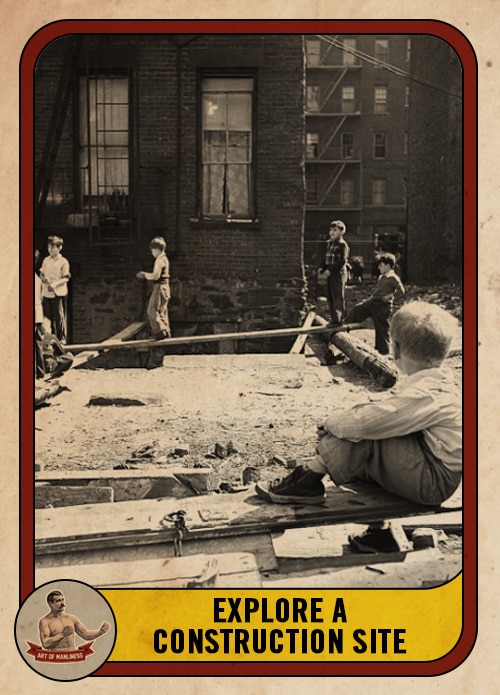
While I was growing up, the subdivision I lived in was still under construction, so there were always plenty of partially-built houses to explore. After the construction workers left for the day, my boyhood pals and I would cruise down the street on our bikes to check out their work and poke around the skeletal structures rising from the muddy lots. The ones that were the most fun to explore were the two-story houses. You’d have to climb up the railing-less, unfinished stairs and when you got to the top, you were able to walk to the edge of the second story’s framing and throw stuff down on your buds.
It’s a hard way to beat spending an afternoon.
Use a Pocket Knife

In Home Grown, author and homesteader Ben Hewitt describes how he gave his sons their first pocket knives at age four. Hewitt admits that he was worried that they would constantly slice open their pudgy toddler fingers with these sharp implements, but much to his surprise, his young boys rarely injured themselves. “There was something in the seriousness of the blade and the responsibility granted that transformed our son[s],” he notes. By giving them the responsibility of using a knife safely, Hewitt’s kids became responsible.
While you don’t have to give your toddler a pocket knife, consider letting them handle this trusty, handy tool sooner rather than later. It’s the only way they’ll learn how to handle sharp things safely and deftly, and doing so will open up new activities to them — from whittling to mumbley peg.
Climb a Rope

Many schools have banned certain physical activities from recess and P.E. class due to their being too “dangerous.” Football, dodgeball, tag . . . even all balls of any kind and running itself have gotten the boot in some places. Ropes have also been removed from many school gyms, due to the perceived risk of a child falling from the top — and probably also because of the risk of injury to the self-esteem of the kid who can’t even make it halfway up.
Climbing is one of the crucial physical skills everyone should develop, however, so if schools don’t provide the opportunity for its practice, then parents ought to, perhaps putting up a rope of their own in the backyard.
Ride Your Bike Off a Ramp
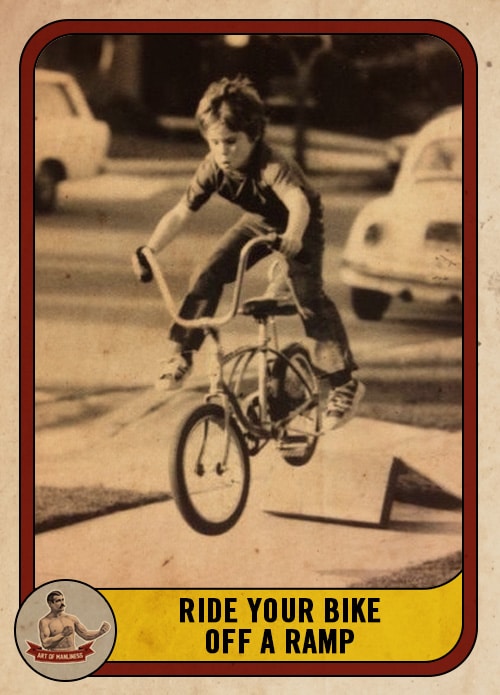
As a kid, taking your bike off a ramp is the closest you’ll get to flying without being on a plane. Back when I was a boy, my neighborhood posse and I built a big ol’ ramp out of a pile of dirt. We’d spend hours flying off that thing. For some reason, my favorite thing was to let go of my bike in midair and watch it continue to fly while I hit the dirt.
Building and riding off ramps will teach your kids some basic physics and even some construction skills. They’ll also learn, just as Napoleon Dynamite did, that if you’re not careful, taking your bike off sweet jumps can be hazardous to your junk.
Make a Fire
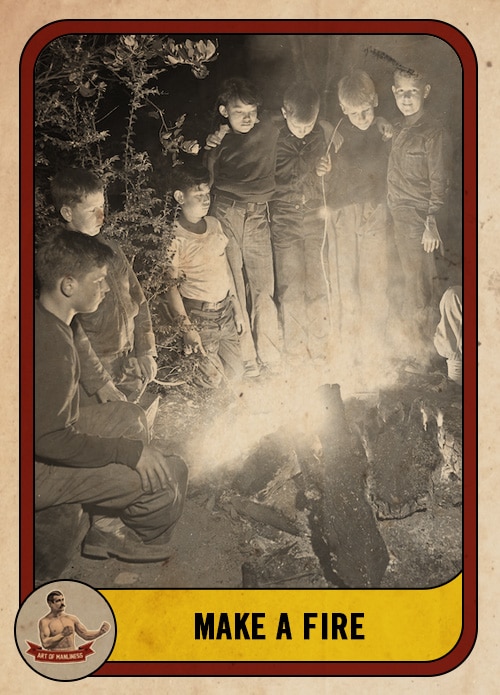
There’s a primal connection between man and fire. Nurture that connection with your kids while they’re young. Let them play with matches and light candles when they’re pre-school age (with your supervision). They’ll learn that fire indeed burns, but from a flame so small it won’t hurt too much if it glances their skin. When they get to be about 8 or 9, let them build a fire all by themselves (still with your supervision, of course).
Explore a Tunnel

When my father-in-law was a boy in the early 1960s, the post-WWII housing boom was still in full swing, and a huge neighborhood was being built about a mile away from his home. Once the land was cleared, workers laid out gigantic sewer pipes so high he could walk through them without bending down, and so long they became pitch black once you advanced several yards from the openings. Though exploring the tunnels was a favorite activity of the neighborhood boys, my father-in-law recalls being a little terrified by these expeditions. Yet they still became an indelible memory!
Modern explorers should avoid tunnels filled with sewage and unsavory critters or humans, stay away from storm drains after rain, wear gloves, and bring along a flashlight — as well as a heaping helping of courage!
Listen to my podcast with Lenore Skenazy about “free range” parenting:
_____________
Magnifying glass photo courtesy of George’s Workshop
Penny photo taken by Eli Duke


